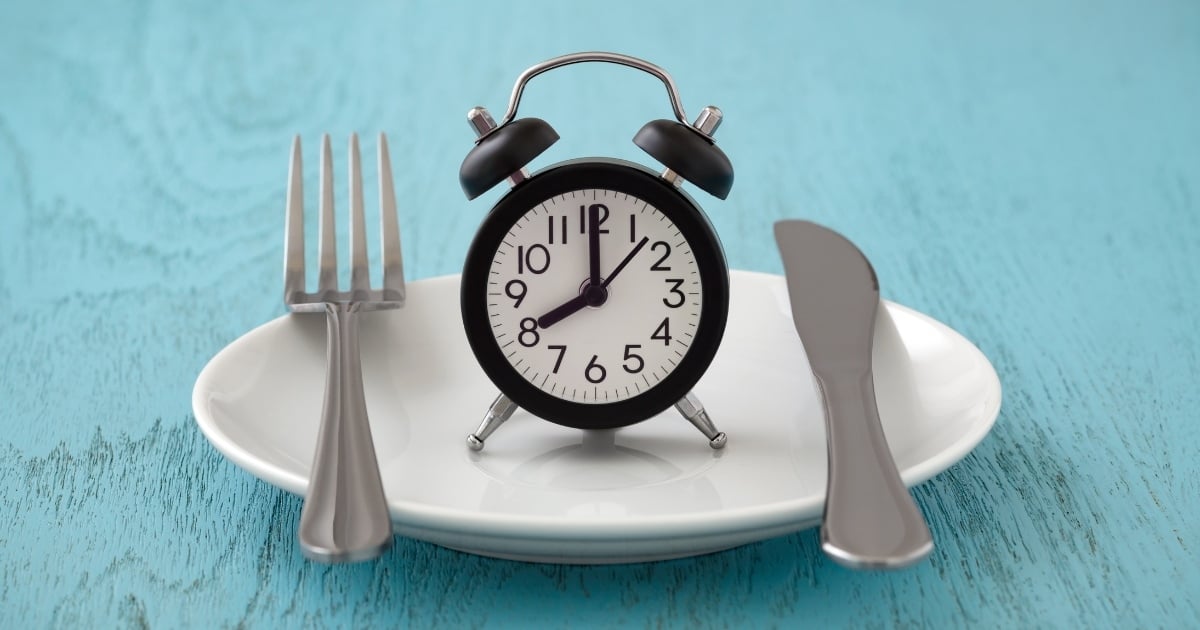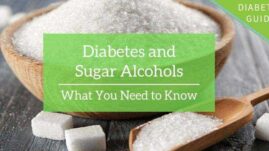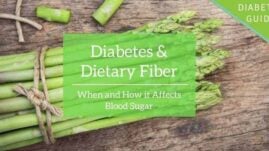This post may contain affiliate links. Please read our disclosure.
If your first reaction to “intermittent fasting with type 1 diabetes” is “Oh my gosh, my blood sugar would be so low! I could never do that!” then definitely keep reading.
In this guide, I will cover everything you need to know about intermittent fasting with type 1 diabetes.

Table of Contents
- What’s the point of intermittent fasting?
- A note on blood sugar levels
- Special precautions
- How intermittent fasting works
- What an intermittent fasting schedule looks like
- But won’t I be hungry?
- But isn’t eating breakfast really important?
- How to do intermittent fasting with type 1 diabetes
- Frequently asked questions
- Why I love intermittent fasting as a mom
- Final thoughts: should you try intermittent fasting?
What’s the point of intermittent fasting?
Intermittent fasting has gained attention for its potential in managing type 1 diabetes alongside traditional treatment methods. This approach may offer several benefits, supported by emerging research:
Reduced risk of hypoglycemia
Fasting could help decrease episodes of hypoglycemia in type 1 diabetes by allowing for more predictable blood sugar levels due to reduced frequency of meals.
Enhanced fat metabolism and blood sugar management
Intermittent fasting may improve fat metabolism and lower glycemic variability, contributing to more stable blood sugar levels.
Increased insulin sensitivity
There’s evidence to suggest that intermittent fasting can improve insulin sensitivity (how responsive the body’s cells are to insulin) and reduce glucose production by the liver.
Weight management
By helping with weight loss and improving body composition, intermittent fasting can play a role in managing the additional challenge of weight gain that is often associated with certain diabetes treatments.
Thoughts on the use of CGM
For people with type 1 diabetes, using a continuous glucose monitor (CGM) during intermittent fasting can provide valuable insights into blood glucose patterns, helping to identify periods of potential hypoglycemia (low blood sugar) and adjust fasting schedules accordingly.
It’s worth noting that while intermittent fasting shows promise, it’s important for people with type 1 to proceed with caution and under medical supervision. Adjustments to insulin regimens and careful monitoring of blood sugar levels are essential to avoid negative effects such as hypoglycemia.
As research continues to evolve, the use of intermittent fasting as part of a diabetes management plan should be personalized and based on feedback from healthcare providers.
A note on blood sugar levels
Before we get started: If your blood sugar drops just because you don’t eat for a handful of hours, you’re likely taking too much basal (background) insulin via pump or injection. Talk to your certified diabetes care & education specialist (CDCES) or primary care physician about “basal testing.”
(Or check out the book Think Like a Pancreas by Gary Scheiner, MS, CDCES, and do the basal testing yourself.)
Basal testing consists of purposefully skipping a meal (or two) to see if your insulin keeps your blood sugar steady or if your blood sugar significantly rises or falls out of your personal goal range.
As a general rule, if it rises, you’re not getting enough basal insulin. If it falls, you’re getting too much.
Special precautions
Before we discuss the nuts and bolts of intermittent fasting, an important note: If you have diabetes and are thinking about trying this approach, speak with your healthcare team first.
They can help you with strategies to avoid potential complications such as hypoglycemia, hyperglycemia (high blood sugar), dehydration, and diabetic ketoacidosis (DKA, a serious diabetes complication that can occur when blood sugar levels have been too high).
They can also assess if you have any conditions that increase your risk with intermittent fasting, advising whether you should avoid or postpone this approach. (The Association of Diabetes Care & Education Specialists [ADCES] has published four risk categories of fasting for people with diabetes.)
Those who have type 1 diabetes and are not in target range, for example, are considered very high risk.
How intermittent fasting works
When you wake up with an in-range blood sugar (ideally between 70 to 130 mg/dL [3.9 to 7.2 mmol/L] as a person with type 1 diabetes — 130 mg/dL being on the higher end but offering some room for imperfection in a complex disease) and you don’t eat breakfast, which means you don’t take a bolus of insulin, your body will continue to burn fat for fuel.
This is because you have yet to introduce a new supply of glucose from food. You have yet to turn on that switch telling your body to rely on glucose for fuel instead of fat. The moment you eat or drink something containing calories, your body says, “All right! Now it’s time to burn glucose!”
Intermittent fasting takes advantage of this physiologic process by alternating periods of fasting with periods of eating.
What an intermittent fasting schedule looks like
There are a lot of different ways you can approach intermittent fasting, and after doing this myself for several years on and off, I’ve found I can flexibly create my own approach that feels most natural to me.
Types of intermittent fasting
There are a variety of different types of intermittent fasting, such as time-restricted fasting, overnight fasting, alternate-day fasting, circadian rhythm fasting, and periodic fasting.
For people with type 1 diabetes, intermittent fasting presents both opportunities and challenges. While some preliminary research suggests possible benefits, careful planning and monitoring are essential.
Here are several of the most common fasting schedules:
Time-restricted fasting (e.g., 12- or 16-hour fasting)
Eating all meals within a specific time window each day, often resulting in a daily fasting period of 12 to 16 hours.
It’s important to note that you should still eat a normal day’s worth of calories during the eating window.
If you’re trying to lose weight, that amount of calories might only be, say, 1300 to 1600, but you still need to get your allotment of calories and nutrients while following a fasting program.
24-hour fasting
Going without food for a full 24 hours, once or twice a week, from, say, dinner to dinner. This should generally only be performed once per week.
(Read this guide from John Berardi, PhD, and colleagues to see what happens if you do a 24-hour fast too often.)
Alternate-day fasting
Alternating days of regular eating with days of either complete fasting or significant calorie reduction.
Circadian rhythm fasting
Aligning fasting periods with the body’s natural circadian rhythm, such as incorporating nighttime fasting. This method involves eating the day’s meals within daylight hours and fasting during the night, which can potentially support metabolic health.
Periodic fasting
Selecting specific days for fasting each week or month.
For example, in the 5:2 method, individuals might eat normally for five days and then choose two days to significantly reduce calorie intake. This method can offer flexibility and has been explored for its potential benefits in weight management and metabolic health.
However, for people with type 1 diabetes, it’s important to approach periodic fasting with caution, considering the need for consistent carbohydrate intake to manage blood glucose levels and prevent hypoglycemia.
Moving forward
Research into intermittent fasting and type 1 diabetes is extremely limited. However, recent explorations have begun to shed light on its potential benefits for weight management and metabolic improvements in people with type 1.
Initial studies, such as a pilot study (a “small-scale test of the methods and procedures to be used on a larger scale”) published in Obesity Medicine, have shown promising results in terms of safety and effectiveness, suggesting that carefully monitored intermittent fasting may offer a viable strategy for weight loss without increasing the risk of negative events like hypoglycemia.
Similarly, a narrative review in Nutrients highlighted intermittent fasting’s potential to enhance insulin sensitivity and reduce blood sugar variability.
In early 2024, researchers at the University of Illinois Chicago started a pilot study that will eventually provide data on how time-restricted eating compares to calorie counting in people with type 1 diabetes.
However, it’s crucial to note that research in this area is still in its early stages, particularly regarding the long-term effects and best fasting protocols for people with type 1 diabetes.
Therefore, while intermittent fasting presents an interesting potential avenue for dietary management in type 1 diabetes, further clinical trials are necessary to fully understand its impact and safely integrate it into treatment plans. It’s important to consult the latest research and healthcare professionals for guidance.
But won’t I be hungry?
Guess what — it’s OK to be a little hungry. After you stop worrying about your belly not feeling full 24/7 and push through it (being sure to keep a close eye on your blood sugar levels), around 10 a.m., you might actually notice that you feel a little bit awesome. A little more clear-headed, a little more focused, maybe with even a little more energy.
Drink some water — it’s good for you anyway — and embrace that feeling of your body just being empty. Yes, there are many ways to lose weight by eating every 3 to 4 hours, but that’s not the only way to eat, and it’s not the only way to lose weight.
Are you someone who is always thinking about their next meal? Always snacking?
As Dr. Berardi explains, “Intermittent fasting can be helpful for in-shape people who want to really get lean without following conventional bodybuilding diets, or for anyone who needs to learn the difference between body hunger and mental hunger.”
For athletes and people engaged in intense exercise, individual energy needs and responses to fasting can vary.
While some may perform well under an intermittent fasting regimen, others might find they need more consistent fueling to maintain peak performance. It’s important to listen to your body and consult with a healthcare professional to find the approach that works best for you.
But isn’t eating breakfast really important?
Eating breakfast can absolutely be a crucial part of weight loss and maintaining a healthy metabolism, but it’s not the only way, according to some experts.
“There haven’t been any conclusive studies that found eating breakfast to have a positive effect on weight loss or weight maintenance,” explained sports nutritionist and registered dietitian Leslie Bonci, MPH, RDN, CSSD, LDN, in Popular Science in 2017.
Also, the idea that skipping breakfast causes weight gain is oversimplified and not necessarily true. It may not be the act of skipping breakfast itself that can cause weight gain. In studies that have observed this effect, a large majority of those who skipped breakfast also lacked other healthy habits overall, which may instead have resulted in the weight gain.
“It could be that eating breakfast is simply a marker of a healthy lifestyle and, in itself, doesn’t protect against obesity,” explains a 2016 article on the website ScienceAlert.
And more recent research has continued to present mixed results on the importance of breakfast for weight management.
A 2019 systematic review and meta-analysis (analysis of data from several studies) published in The BMJ indicated that the impact of breakfast on weight and energy intake varied. This study, which looked at several randomized controlled trials, suggested that there wasn’t a clear-cut effect of eating or skipping breakfast on weight loss.
The results indicated that the general recommendation to eat breakfast might not have a universal impact on weight management. These findings highlight the complexity of dietary habits and their effects on weight, suggesting that individual dietary preferences and lifestyle choices play a significant role in weight-management strategies.
How to do intermittent fasting with type 1 diabetes
First off, be sure to get the all-clear from your doctor before you give intermittent fasting a try when living with any type of diabetes.
Using a CGM can help pinpoint when you’re at risk for hypoglycemia, making it easier to understand how your blood sugar responds to meals and fasting periods.
As you adapt to intermittent fasting, you may find a sense of mental freedom, especially if you have type 1 diabetes. This is because there’s less concern about experiencing high or low blood sugar levels after skipping breakfast.
Research indicates that intermittent fasting can influence insulin sensitivity and blood glucose stability, including in people with type 1 diabetes.
While some studies suggest that fasting can lead to more predictable blood sugar levels due to reduced meal frequency, it’s important to be aware that individual responses can vary widely.
If you stick to your fasting program consistently, you’ll likely find you lose weight and therefore increase your insulin sensitivity. This means you’ll be able to decrease your basal insulin rates, which is a good thing.
This is part of weight loss with diabetes, but if you aren’t expecting it, you’ll be annoyed and frustrated with the low blood sugars, so be prepared.
How to adjust high or low blood sugar when fasting
Waking up with an in-range blood sugar is extremely helpful, but obviously, we’re not perfect and things happen. Here’s how to manage your plan for fasting if your blood sugar is not in your ideal range when you wake up:
- If you wake up a little high, sure, you can take a reduced correction dose (read Think Like a Pancreas or speak with your healthcare team for more information on determining your correction dose) and carry on with the fast, but be aware that introducing that bolus of insulin could be enough to switch on your body’s need to burn glucose for fuel.
- For legitimate “dawn phenomenon” high blood sugars, you may simply need a bolus correction of insulin every morning that really is part of your “basal” insulin dose but is applied via pump or injection as a bolus. If this prevents morning fasting highs, it’s part of your fasting regimen. Learn more about managing the “dawn phenomenon” here.
- If you don’t take that correction dose of insulin, then you’re just spending the next several hours with a high blood sugar, which is counterproductive (and potentially dangerous) if our overall goal is health … right? So, definitely take the insulin you need in order to be at your target blood sugar levels — that’s your first priority.
- If you wake up low, then you obviously have to eat and fasting is no longer going to work. You’d be better off eating a healthy breakfast, fueling your metabolism since it’s already burning glucose for fuel, and trying again tomorrow.
- Similarly, if you develop hypoglycemia during a fast, break the fast immediately and use your hypoglycemia treatment plan to bring your levels back into target range. Remember the 15-15 rule, which recommends having 15 grams of carbs, checking your blood sugar after 15 minutes, and repeating if it’s still low. Also be sure to have a glucagon treatment on hand in the event of severe low blood glucose.
- If you routinely wake up with blood sugars that are too high or too low, you need to go back and do some basal testing or test the insulin-to-carbohydrate ratios that you’re using for the food you eat before bed.
- An additional sneaky blood sugar issue to keep in mind: If this applies to you, it’s necessary to stop binge eating late at night. If you’re currently up at midnight eating yourself out of house and home, focus on this first before pursuing intermittent fasting. People often blame high blood sugars in the morning on the dawn phenomenon when it’s actually the result of late-night binge-eating.
It’s not a magic trick. It’s not a fad. It’s just basic science of how the body responds in a fasted state.
Exercising in the morning when fasting … is actually easier (in my experience)
When you’re fasting during your exercise, it’s generally observed that aerobic or cardiovascular activities tend to lower blood glucose levels, which makes sense given the muscle’s increased use of glucose for energy.
However, certain exercises, especially those that are high-intensity like weightlifting, can trigger a rise in blood glucose. This is partly due to the body’s stress response, releasing hormones like adrenaline, which in turn prompts the liver to release more glucose.
You may therefore find that with weightlifting or other anaerobic workouts, you might actually need a bolus of insulin for that type of workout.
This will not take away from your fasted efforts — this simply helps use the glucose that’s produced when glycogen stored in your muscles is broken down during anaerobic exercise.
It’s important to find the right balance for managing blood glucose levels during different types of exercise and to consult with your healthcare team as needed for guidance.
I LOVE fasted cardio! In fact, I make sure that all of my exercise sessions happen either fasted in the morning or fasted in the evening (by not eating anything after 1 p.m. and then getting on the treadmill around 7 p.m.).
This ensures that all bolused rapid-acting insulin is well out of my system. It works. When I used to lift weights, I did find that I needed 1 unit of insulin in the morning if I was doing a fasted weightlifting workout.
So in a nutshell:
- Wake up with an in-range blood sugar (or correct a slight high with half of your usual correction);
- Begin your workout while fasted, or if managing fluctuating blood sugars is challenging, consider scheduling your workout for a different time;
- Check your blood sugar halfway through your workout for safety’s sake;
- If your anaerobic workout proves to typically raise your blood sugar, take half of what you would take to correct that high — but take it when you start exercising to prevent the high in the first place;
- If your workout is aerobic (cardio), just continue your workout — you shouldn’t see a rise in blood sugar from aerobic fasted exercise, but be aware that you will be at greater risk for hypoglycemia;
- Check your blood throughout your workouts if you’re not using a CGM;
- Shower (thank you), and enjoy the rest of your fasting.
Frequently asked questions
Is intermittent fasting safe for people with type 1 diabetes?
For people with any type of diabetes, attempts to try intermittent fasting should be done only with the guidance and feedback of your physician.
In many cases, it appears to be safe. But you need to speak with your healthcare team to make sure that you don’t have any other conditions for which intermittent fasting is contraindicated and that your insulin doses and medications are properly tuned.
For people with type 2 diabetes who typically take morning medications to lower blood sugar, it’s advisable to consult with your doctor about taking the medication with the first meal of the day instead of the usual morning schedule if you’re planning to fast in the morning.
With your doctor’s OK, this adjustment can help you better manage blood sugar levels in accordance with the altered eating schedule.
For people with type 1, as discussed extensively above, your insulin doses should be finely tuned (even if you don’t ever plan to fast) so that you can miss meals and your blood sugar is generally steady and in a healthy range.
Adjusting your insulin doses to meet this standard is called “basal testing.” If you’ve never done any basal testing to assess the accuracy of your personal insulin doses, definitely do that first. And do it even if you don’t ever intend to fast. It’s essential to diabetes management.
During your first week of fasting, check your blood sugar often during your fasting window to see how your body responds. If you stick with it long-term, you’ll likely find you will need to reduce your basal rates (even within a week or two) because intermittent fasting often has the fantastic benefit of increasing your sensitivity to insulin.
What can you drink during intermittent fasting?
During the timeframe that you’re not eating calories, you shouldn’t be drinking any calories either. Black coffee or tea or water or seltzer (or diet soda, if you must) are all safe to drink.
While I lean toward minimizing artificial sweeteners and opting for natural hydration sources like water, it’s essential to recognize that health and nutrition are highly individual.
Although some concerns exist around artificial sweeteners, including their impact on health, the scientific community’s views on this are varied. It’s always best to consult healthcare professionals for advice tailored to your needs.
Read your labels carefully, and when in doubt, reach for some all-natural plain water.
Be sure to drink enough water to avoid dehydration, one of the potential risks of intermittent fasting.
Do you need to do intermittent fasting if you already follow a ketogenic diet?
You’re obviously going to be burning more fat than the rest of us after eating a ketogenic breakfast, but even some of that breakfast will be converted to glucose and require a bit of insulin to digest, so intermittent fasting still applies to keto-folks, too.
Although there is currently very limited research data on adding fasting to an already disciplined ketogenic diet, my personal hunch is that it would likely help with weight-loss progress.
Just beware, however, that if you don’t already understand how to eat enough on a ketogenic diet, adding fasting to the mix can be a recipe for a binge during the eating period of your fasting plan.
I highly recommend studying and practicing ketogenic eating for a few months before adding fasting to it. It’s very common for new low-carb eaters to eat too little because they are still afraid of eating too much fat. (And fat, as you’ve probably heard, is a pretty crucial part of a successful ketogenic diet.)
Why I love intermittent fasting as a mom
I can wake up in the morning, drink a cup of black coffee and guzzle some regular ol’ water, then pack our bags and head out the door to the playground or playgroup or the library. I can chase my kids around all morning long and I don’t have to worry about my blood sugar.
If I woke up at 90 mg/dL (5.0 mmol/L), I know my blood sugar is still in that zone.
I don’t have to spend any time making my own breakfast. Or trying to find the time to make my own breakfast. I don’t have to worry about getting real, healthy food into my own belly until we come home from our morning activity, and I get the kids lunch and get everybody settled.
(If you’re not a mom of two children, let me tell you that finding time for your own breakfast is actually incredibly challenging some days amongst the diaper changes and the bottles and playtime and the … on and on and on! When that second kid pops out, parenting is ON in full-power mode, 24/7.)
By 1 or 2 p.m., I’m not starving, and I actually feel pretty energized after that morning fast. And making myself a healthy meal feels very doable because the busiest part of the day is behind us.
Final thoughts: should you try intermittent fasting?
If all of the above sounds appealing to you, talk to your doctor about giving it a try! (And remember that intermittent fasting won’t be appropriate or effective for everyone with type 1.)
A few things to keep in mind when embracing intermittent fasting with type 1 diabetes:
- Do you currently have a healthy relationship with food? If not, I would address that first. Fasting is not ideal for the yo-yo dieter or someone trying to recover from an eating disorder. Check out my books Emotional Eating With Diabetes or Dealing With Diabetes Burnout to get started.
- Take good notes! The first week you try fasting, write down the insulin you took before bed, what your blood sugar was in the a.m., etc., so you can pinpoint any diabetes-related variables that are causing lows or highs in your blood sugar during the fasting period. For example: If you’re still up at midnight eating chips and ice cream, you can absolutely bet that will raise your blood sugar during the hours of 6 a.m. to 12 p.m. when you’re fasting. Some people blame the dawn phenomenon for what is actually late-night binge eating.
- During the first few fasts, check your blood sugar more often. Even though fasting itself shouldn’t cause low blood sugars, your insulin doses simply might not be appropriate. And nothing will reveal that sooner than fasting. Check your blood sugar often and take good notes. Learning how to study and adjust your insulin doses is a crucial part, I believe, of long-term success in life with type 1 diabetes.
- It offers flexibility: Occasional deviations, like indulging in breakfast when you’re truly hungry or during special family outings, don’t derail its benefits. It’s about finding a balance that works for you, listening to your body, and not stressing over the occasional exception. It’s crucial to stay consistent with the program, but understanding that life’s unpredictability sometimes calls for adaptability. It’s not a big deal! Make it work for you. Follow the program as much as you can, and don’t freak out when life gets in the way.
- You may find it useful to embrace fasting for a few months, then go back to a normal schedule. I’ve found that intermittent fasting has been really wonderful for me for several months at a time. Then I take a break from it for a couple of months, and eventually I naturally feel ready to follow that schedule again. Listen to your body and stay in close contact with your healthcare team to find what works for you.
- Be patient with your weight-loss journey, recognizing it as a long-term commitment rather than a quick race. If you find yourself breaking your fast prematurely to eat one of those darn office muffins, remember it’s part of the learning process. I’m a big believer that creating your own life around nutrition is a very long work in progress. Be constantly open to evolving, learning, trying new things, and never never never shaming yourself for being imperfect. It’s one big science project. Enjoy the project, stop punishing yourself, and learn to love the food you eat. Food can be fun, even when you’re trying to lose weight!
Learn. Study. Experiment. Repeat!
Update: I recorded this video in which I talk more about why I do fasted cardio, how I do it, and the benefits. Please let me know what you think in the comments below.






Lisa
Thank you for this article! How do you structure your meals? For example, if my total daily calorie goal was 1500 and I was following the 16 hour fast, am I stuffing all my calories into two large meals a day? I feel like I probably wouldn’t even be hungry for the second meal.
Christel Oerum, MS
That would be one option, or do 3 smaller 500-calorie meals, maybe choosing more calorie-dense foods
Emily
I found this article really helpful as I was concerned with fasting and being a T1D. I have been doing the 16 hour fast for the last 3 days and my blood sugars during the fast are amazing and steady not to mention not having to decrease insulin in order to exercise! Winner! I’m just having issues with high blood sugars after I eat! They are sky rocketing!!!
V
This is the same with me! Any thoughts on why / what to do to help as I would like to continue to do IF!
Angeline Clarke
Thank you so much for this article, which has been so helpful.
I am T1D (42 yrs) on insulin pump and cgm. It has been a constant frustration, since using the pump/cgm that despite clearly spiking when eating, I am unable to get this to a better time in range.
Due to surgery, I needed to fast and decided I would progress IF, after much reading. I generally use 16:8 20:4, but still working out what is right for me. I’m delighted with the improvements after a few weeks with my time in range.
My general exercise is to run, and I want to return to that, do you have any possible information as to the impacts of running, whilst in a fasted state, as I prefer to run when I wake. Normal runs would be 30/60 minutes x3 with longer run at weekend?
Thank you for the priceless articles Diabetesstrong and Dealing with Diabetes burnout, was the best book, I’ve read.
Ginger Vieira
Hi Angeline!
I hope your surgery recovery went smoothly! I’m a huge fan of running fasted in the early AM. If you’re on a pump, you may find that you need to set a reduced basal rate for at least 1 hour prior to running — some people need a BIG reduction (like 70%) and others need only 25%, etc, so you’ll have to experiment. Personally, I don’t use a pump and I find that my blood sugar RISES in the morning due to dawn phenomenon so I actually need a small bolus when I wake up — like 1/4 units. Then I do my cardio. So, you can see…there isn’t one simple answer to this unfortunately! I would first experiment with the expectation that you could go low. If you rise instead, and see that pattern repeat itself for a few days, then it sounds like dawn phenomenon hormones are at play.
I’ve written more about this here: https://beyondtype1.org/avoid-exercise-low-blood-sugars/
You can also find ALL my writing here: https://www.gingervieira.com/diabetes
Thank you for reading! I’m so glad you find the burnout book so helpful!